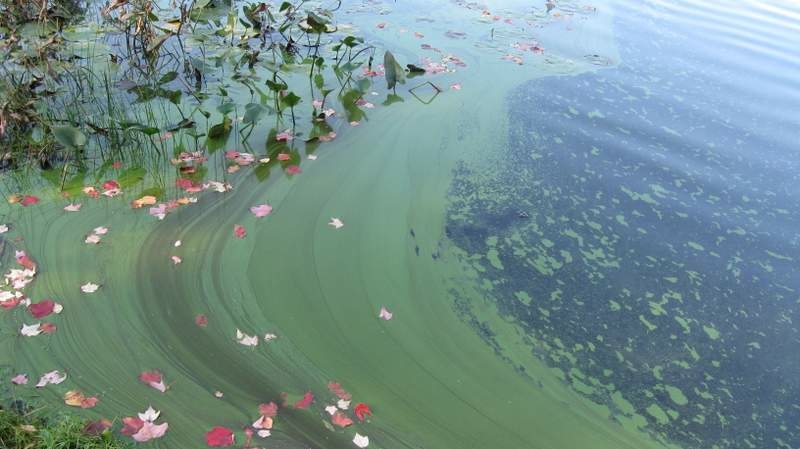Cyanobacteria are one of the oldest and most important forms of bacteria in Earth’s history, and one of the earliest forms of life. As the species has been able to perform photosynthesis for over 3.5 billion years, they are almost directly responsible for depositing oxygen into the atmosphere and allowing most other organisms to be able to breathe. Acting
basically as a living chloroplast, they are also responsible for forming a relationship with other single-celled organisms, acting as the mitochondria for what would become plant cells. However, these small creatures can have devastating effects.
Algal blooms occur when large amounts of nutrients are present in the water from fertilizer or septic runoff. Though usually harmless, even a small bloom can be dangerous as the bacteria produces a chemical known as cyanotoxin, leading to ingestion of the bacteria or surrounding water causing sickness. Ingestion of the toxin can lead to neural and digestive symptoms, including loss of energy, appetite, vomiting, loss of balance, convulsions, confusion, and diarrhea. This can be especially problematic for pets, as they are much more likely to come into contact with water containing a bloom.
Blooms can appear as scum or a mat on the water of increasing thickness and can appear blue, green, red, or brown. Unfortunately, harmful blooms come more frequently as a result of climate change and begin to thrive in warmer and sunnier climates, especially during and at the end of summer while large species death and runoff allow
nutrients, namely carbon dioxide and phosphorus, to be absorbed. If you or another come into contact with a harmful bloom, rinsing the affected area and preventing it from being ingested are the best case of action. If symptoms have already begun, poison control may need to be called while trying to prevent any further contact. Deaths from cyanotoxins are rare, but increased presence of the blooms proves a risk that best be avoided.





















